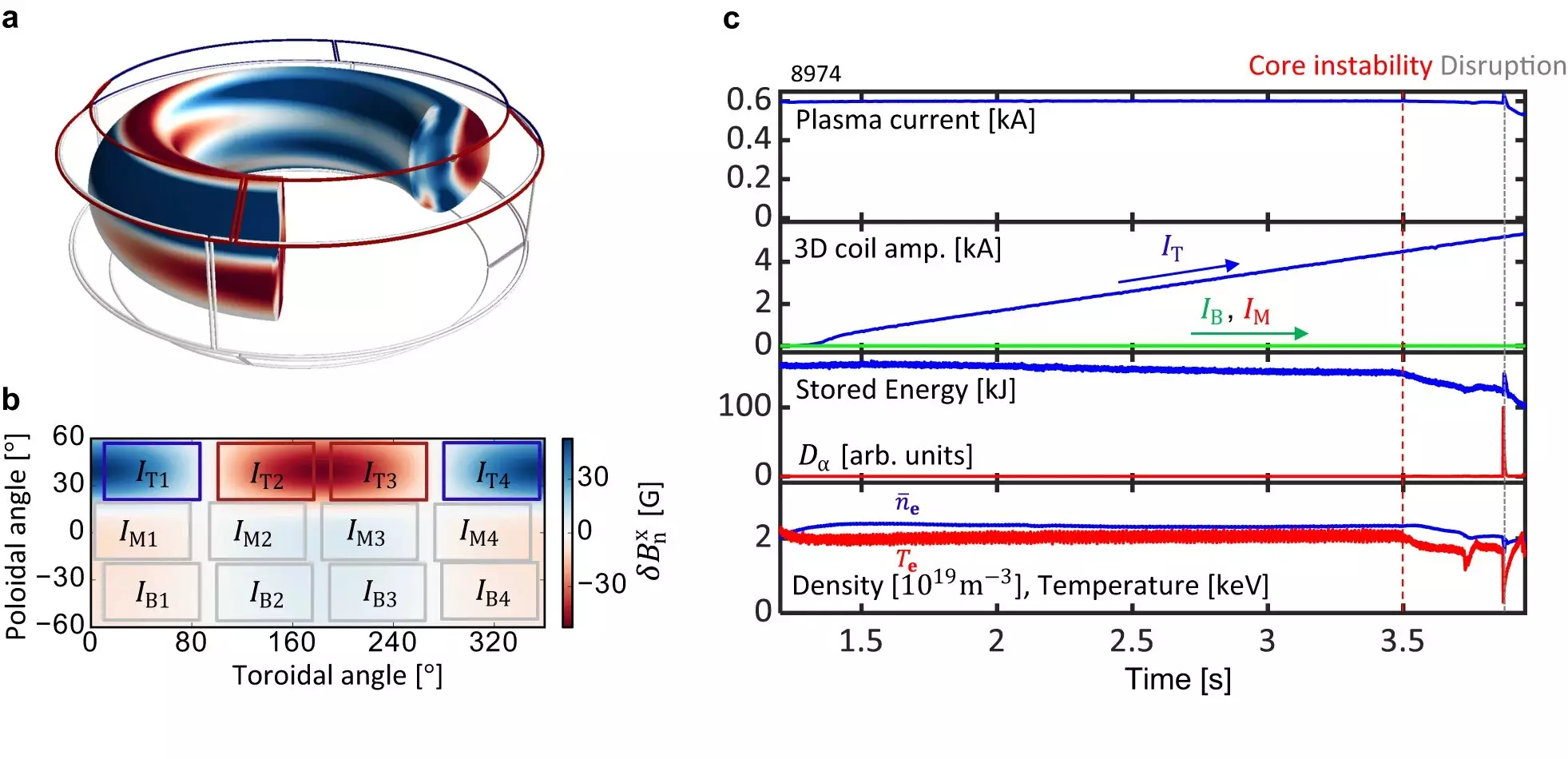In the field of plasma research, scientists are now drawing inspiration from the ancient Japanese art of Kintsugi to revolutionize the way plasma is managed as a potential power source. By acknowledging and utilizing imperfections in magnetic fields that confine a reaction, researchers are able to enhance the stability and performance of plasma for fusion power generation.
One of the key breakthroughs in this approach is the identification and correction of error fields within the magnetic coils of the tokamak device. Previously viewed as a nuisance that could disrupt fusion reactions, error fields are now being strategically manipulated to enhance plasma stability. By applying additional magnetic fields to counteract these imperfections, researchers have managed to maintain core stability while eliminating instabilities at the edge of the plasma.
In the past, attempts to correct error fields often resulted in unintended consequences that rendered the plasma unsuitable for fusion power generation. However, the innovative approach taken by researchers has successfully broken the symmetry of the system, allowing for intentional degradation of confinement without compromising stability. This creative strategy mimics the concept of creating a tiny hole in a balloon to prevent it from exploding, by strategically releasing a controlled amount of plasma to maintain overall stability.
One of the greatest challenges in managing fusion reactions is achieving simultaneous control over both the core and edge of the plasma. With ideal temperature and density targets to hit in each region, eliminating instabilities while maintaining overall stability is a complex task. Through precise adjustments of the magnetic fields generated by the tokamak’s coils, researchers have successfully stabilized both the core and the edge of the plasma, opening up new possibilities for more efficient and reliable fusion power plants in the future.
AI Integration for Enhanced Control
Looking ahead, researchers are exploring the use of artificial intelligence (AI) to optimize their control system and make it more efficient. By teaching the system to predict and adapt in real-time, they aim to further enhance the stability and performance of plasma in fusion reactions. This integration of AI technology has the potential to streamline calculations and decision-making processes, paving the way for more advanced and responsive plasma management systems in the future.
Future Directions in Fusion Research
While the current study focused on internal magnetic coils within the fusion vessel, there is growing interest in exploring the use of magnetic coils outside the vessel for enhanced control and flexibility. This shift in approach reflects the ongoing evolution of fusion technology towards more efficient and robust systems that can withstand the extreme conditions of plasma generation.
The art of Kintsugi serves as a powerful metaphor for the innovative strategies employed in plasma fusion research. By embracing imperfections and turning them into opportunities for improvement, scientists are reshaping the future of fusion energy with greater efficiency and reliability. As the journey towards practical fusion power generation continues, the lessons learned from Kintsugi remind us that beauty and resilience can emerge from even the most challenging circumstances.


Leave a Reply